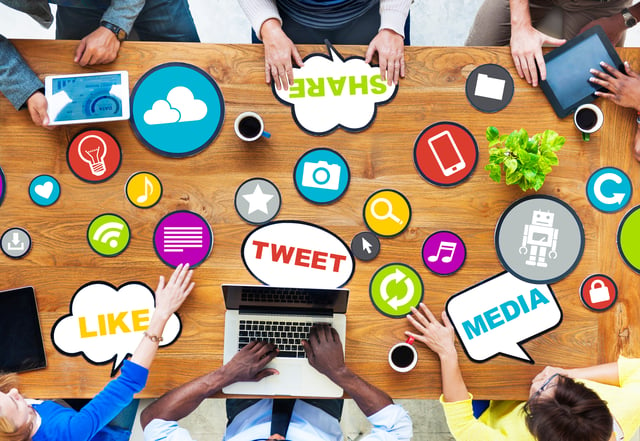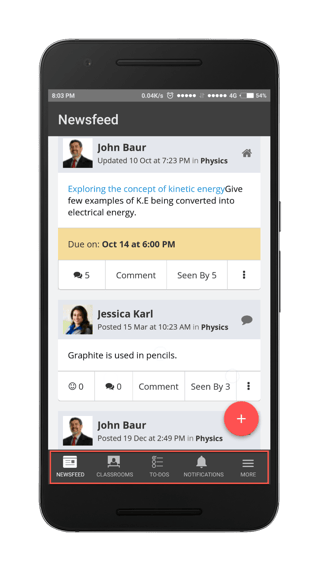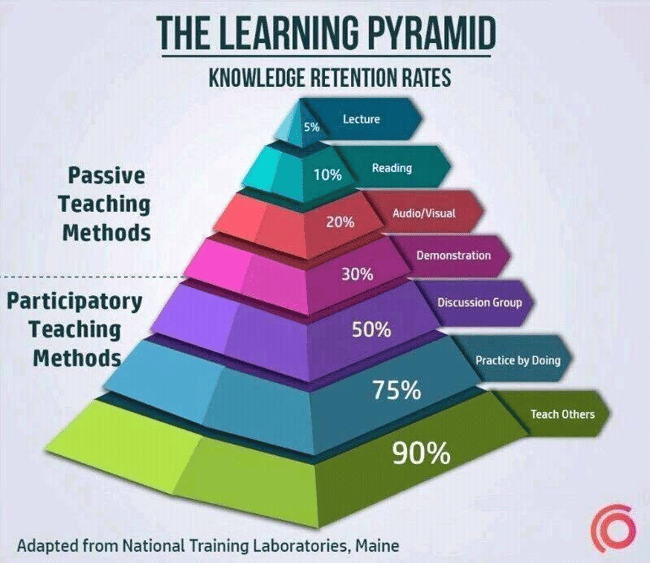“Learning would be exceedingly laborious, not to mention hazardous, if people had to rely solely on the effects of their own actions to inform them what to do. Fortunately, most human behavior is learned observationally through modeling: from observing others one forms an idea of how new behaviors are performed, and on later occasions this coded information serves as a guide for action.”
-Albert Bandura, Social Learning Theory, 1977
The Father of Social Learning Theory - Albert Bandura, rightly proposed that learning was not merely a product driven by direct reinforcement, i.e. ‘to obtain rewards and avoid punishments’ (Skinner, 1938). His theory added a social element, postulating that people largely learn new information and behaviors by watching other people, thus highlighting the acts of observation and modeling in the learning process. Probably the biggest takeaway from Bandura’s theory and the aspect which has the most impact today is that ‘learning is a cognitive process that takes place in a social context.’(Bandura 1977) Simply put, as people share ideas, perform actions or exhibit thinking patterns, we are learning, even when this sharing is informal in a variety of contexts, such as sharing digitally on social networks.
The advent of the internet and proliferation of social media throughout our lives has no doubt impacted social learning, perhaps raised its profile to an all time high, and also created powerful avenues through which to apply it. With all these tools at hand to leverage social learning, the quandary becomes how to organize your social learning program so that it yields the desired positive results? If learning today is happening by observing, interacting and modeling the behavior of peers, friends and colleagues on social media then how do teachers and employers emulate these spaces in their schools and organizations and structure them to cultivate desired skills and dispositions?

I think most of us will accept that social media is a double edged sword. Learners are able to electronically navigate outside the school or office walls to access ideas and diverse perspectives, further their inquiry, and problem-solve, which is great. Then of course there is the other edge of the sword, the pitfalls of social media and social networks laying waste with cyber-bullying, hate or fear mongering, inaccurate, false facts and information with a sprinkle of threats to personal privacy. With these problems in mind it is not surprising that schools and organisations often choose to emulate the popular social media sites, creating their own secure and controlled online social networks for social learning to take place. By creating or adopting a secure and private online social learning space, institutions have much more agency to define, model and monitor for desired outcomes or learning goals. They also have the ability to structure the network, make ongoing alteration and set up safeguards so that the design features and capabilities best cultivate the desired skills and dispositions.
With the scene set for why social learning is a growing educational trend, which holds to its old truisms but whose application has been altered largely by technological advancement. Let’s examine some best practices and guidelines for creating effective and engaging online social learning spaces.
Have a Clear Educational Agenda
How do you know what structure, features and capabilities to look for in a social learning tool if you do not have a clear vision of what you want it to support and produce? The first stage then should be to define and clearly articulate what are the skills and dispositions which you want your social learning program and platform to cultivate. One exercise which may be useful is to take some time as a professional team to hash out the properties of a twenty-first century learner. You may come up with concepts like; communication, critical thinking, compassion, global awareness, cultural understanding, divergent thinking, civic literacy etc. Once you have the qualities of your learner profile defined you can begin to look for a platform of online social learning which will aid the development of these qualities and begin to devise how to leverage it.

Carry out the Properties of Social Learning Theory Purposefully and Effectively on your Platform
Social learning is a theory that has defined properties and processes. If we are leveraging a learning platform or choosing one for its social learning capabilities, it will be advantageous to follow the defined processes and practices of; modeling, observation and vicarious learning, self-regulation, and self-efficacy.
Modeling- the teacher or trainer as part of their role should be modeling, at least initially the kind of social media interaction they are expecting the learners to participate in on the social learning platform. This could mean making content focussed posts, asking relevant questions, providing positive feedback or constructively questioning ideas posted by others, sharing resources and explaining the connection to concepts, content and inquiry etc. The theory is based on a belief that, ‘most human behavior is learned observationally through modeling’ (Bandura 1977), but it also defines conditions for effective modeling as, attention, retention, reproduction and motivation. These conditions should be at the forefront of the instructors mind as they plan and carry out their modeling on the social learning platform. Each should be considered and the action designed to ensure each condition is being properly met.

Teacher has modeled a post sharing a useful resource, asking a question on other, linking it to relevant concepts and has provided positive feedback to students by liking their responses and highlighting the one as exceptional.
Observation and Vicarious Learning- This modeling is all well and good but of not much use if you have no idea whether it is being observed and the subsequent vicarious learning taking place. When learning is derived from indirect sources such as hearing or observation, rather than direct, hands-on, instruction, it is harder to monitor. That is why it is important to have some function within your social learning platform to monitor whether the modeling of; collaboration, compassion, critical thinking etc. on the social learning platform is being observed. This could be an indication of time spent on the platform, pages visited, responses posted and so on. All these analytics help us track and record the observation and vicarious learning and ensure it is happening and to what degree with each individual.

Dashboard which monitors engagement and participation, able to be organized and sorted based on different metrics
Self-regulation- This is like an internal audit of our intended behaviors before acting, which allows us to self-regulate and control the form and function of our actions. This will be cultivated over time and luckily social media has already set up external systems of reward which when internalized lead to self-regulatory processes. Reposts, likes (whether hearts/or thumbs ups), comments on posts etc. are reward structures which reinforce certain behaviors. Trainers and teachers should harness these tools and reward structures, which are already ingrained in most of our learners, to nurture social learning habits and dispositions which are of the nature we are looking to develop. The learners will learn to self-regulate their social learning overtime, to self-observe, make judgments about their environment and themselves and to self-respond with a personal reward system based on their behavior or performance. Learners begin to understand which sort of behaviors on the social learning platform are positively accepted by the group and rewarded, either externally by others liking, reposting or continuing the thread they started or internally with increased self-efficacy.
Self-efficacy- The confidence gained in our abilities by achieving our intended results. Here in lies the power of social learning, by imitating observed behaviours and reaping rewards the learner wants to repeat these behaviors more often. Overtime the behaviours become less imitation and more general dispositions and acquired skills. As peers begin to observe and imitate or act based on an initiating learner's behaviors, he/she experiences a growing sense of belief regarding his or her power to affect situations and their environment. This realization being perhaps the strongest reward one can gain in a social learning environment. In a properly structured social learning environment peers are learning from and reinforcing the behaviors of each other in a reciprocal relationship of modeling and emulation all the while building individual self-efficacy. Social learning which builds self-efficacy, by providing evidence that we can be agents of change and positively influence our environment through dynamic interactions within groups, is the end goal and great reward of a well designed social learning program and supporting platform. Ultimately if structured, monitored and developed properly your social learning program will promote; the development of individual emotional and practical skills, an accurate perception of self and acceptance of others.3.
Practical Actions and Processes
We’ve been dealing a lot with theory in this article, let’s now turn our focus to actions and processes you can take to build and deploy an effective social learning platform and program. The underlying understanding throughout these practical applications of social learning theory being that “learning is better when there is an opportunity to discuss, ask questions, share ideas about the learning topic instead of just consuming a video or a document alone. The discussion around the learning content helps improve the understanding of the individual as well as the group as whole.”
-Choose a platform and build a program: Firstly, choose a platform that will provide you the requisite tools to build your social learning program. Does it have features to provide a response and provision of positive feedback? Is it safe, secure and easy to monitor both content and engagement being put forth by participants? Does it utilize popular social media look and feel as well as employ familiar features? Is collaboration a key aspect, does it support a structure where groups of learners are communicating to solve a problem, complete a task, or create a product? Is it easy to integrate and embed other tools and resources? Your list could go on and on but you should be asking questions such as these to ensure that your platform can support and enhance your desired social learning program
-Encourage participation: Make sure that you have a shared focus. This could be a project to build, problem to solve or shared inquiry into an central idea. Have an online sharing area private, secure and devoted to the focus you have chosen. Build a structure of social learning participation and have the trainer educator model that purposefully. Model actions like sharing resources, asking questions which probe deeper into the topic, responding to posts made by others, sharing videos or personal pictures which highlight connections you’ve made or insights you have had outside of the classroom or office leading to deeper understanding. Incorporate multimedia for a blended learning approach, blogs, Quizlets, video, Prezis. Create collaborative content with team members using tools like Google Docs, PowerPoint, iMovie, video annotation programs, or group generated wikis. Use the tools your platform has for monitoring learner participation, champion those who are participating beyond the medium and conference with those who are below it about what might be holding them back.
Gamifying a social learning environment is an effective way of engaging users and encouraging learners to perform actions in contexts that would otherwise be considered banal or laborious. An award system, with points and badges based on achieving the most well-rounded and complete user engagement possible on the social learning platform, provides the necessary ingredient of motivation to encourage learners to demonstrate the qualities that engagement manifests which in turn leads to better learning. The gamified learning environment provides users with simple, tangible goals. Decades worth of studies and evidence have shown that goals regulate effort expenditure (Locke, 1991), making simple goal setting and goal realization a fun and transparent part of the learning environment motivates learners to exhibit the desired learning behaviours and outcomes.
-Model Appropriately: To revisit the important process of modeling we should define what the best practice is with regards to this and encouraging participation. When a group of learners is first introduced to the social learning platform the instructor should be modelling often. Replying to student posts, making posts in the vein which they would like to see learners imitating, essentially leading the discussion and conversation by example. But as time goes on and learners begin to show confidence, initiative and proficiency with their own social learning contributions the instructor should retreat. If a student asks a question about a shared resource, the instructor should not answer it but wait for a peer to do so, if no one steps up then they could prompt, ‘good question does anyone have an idea about this?’ This way the learners take ownership of the conversation and inquiry and the social learning becomes more authentic and powerful.

The goal is to have interactions like this appearing organically and regularly. Student initiated insights and questions responded to appropriately by other students with further insights, connections and resources being shared deepening the collective understanding.
-Provide the right tools: Learners should be able to access content, ask questions, and give feedback. They should be able to respond to each other with comments or simple likes. It will be great if they can link and organize content through Hashtags for important or recurring themes and concepts. Features that promote social learning, like mobile capabilities, support for content in different formats (multimedia), ongoing feedback and messaging opportunities will help create a truly collaborative social learning environment.

-Keep it safe, secure, focussed and positive: We want our learners to have free reign to share their knowledge and experience. Instant Messaging is beneficial in that it allows for them to share a thought or inspiration immediately rather than have to hold on to it until the morning meeting or class discussion time. It allows for delivering instant results and eliminating the pressure of drafting a formal email or speaking in front of a group. Instant Messaging can be a powerful social learning tool, although as I’m sure most users know and will concur, many IM tools like We Chat, WhatsApp or Facebook Messenger, tend to generate nothing but idle chitchat. This is why it makes sense to create a private and secure social learning environment with a defined purpose that promotes conversation and connections while allowing for content to be monitored or even logs of user activity to be generated and reviewed. The same issue can arise with sharing content, a very important process of the social learning environment. Social media sites such as Twitter, Facebook, LinkedIn and Pinterest make it easy for people to connect and share information, but it is easy to be sucked into a wormhole of aimless browsing and distractions, and of course, the ever present issue of inappropriate or hurtful content. If you are simply pulling in relevant material from these sites to a private, monitorable and transparent learning space - then the obvious pitfalls and distractions disappear.

On a privater learning platform you should be able to track all activity of users on the site and within each learning module, through an activity stream. Useful if you need to suss out inappropriate or unacceptable online behavior.
Conclusion: A study from the National Training Laboratories in 2000 found that only about 5 percent of the information delivered through lecture was retained. Compare that with retention rates at 50 percent for discussion group and 70 percent for practice by doing. Even higher, at 80 percent, was retention by students teaching others. A properly structured social learning environment has students discussing, practicing and teaching others, leading to a continuous learning process with deeper knowledge acquisition, greater retention and development of desired skills and dispositions. “Learning is not a spectator sport…Students must talk about what they are learning, write about it, relate it to past experiences, apply it to their daily lives. They must make what they learn part of themselves.” (Chickering and Gamson) By observing and performing these processes in a controlled social learning environment students can engrain the skills of lifelong learners and reap the benefits throughout their lives.

Source: http://www.ntl.org/
A study by the National Training Laboratories found that the more active the teaching and learning methods, the higher the retention rates.—Adapted from The Learning Triangle: National Training Laboratories
Bandura, A. (1977). Social Learning Theory. New York: General Learning Press.
Chickering, A. W. and E. F. Gamson, “Seven Principles for Good Practice in Undergraduate Education,” American Association of Higher Education, Bulletin 39 (7), pp. 3-7, 1987
National Training Laboratories Institute for Applied Behavioral Sciences, “The Learning Triangle: Retention Rates from Different Ways of Learning,” Bethel, Maine, 2005
Skinner, B. F. (1938). The Behavior of organisms: An experimental analysis. New York: Appleton-Century.
Locke, E. A. (1991a). Goal theory vs. control theory: Contrasting approaches to understanding work motivation. Motivation & Emotion.
Planning to roll out Learning Technologies to enhance learning pedagogy?
Download this white paper that includes 24 Best Practices for implementing an LMS.



Leave a Reply